
lilyhotel
-
Posts
27 -
Joined
-
Last visited
Content Type
Profiles
Forums
Store
Help Articles
Posts posted by lilyhotel
-
-
In hangzhou :
WuShan tea house
吴山茶楼
good service
West Lake Longjing tea.
-
no photo, no truth.
-
maglev is too expensive...
you can take the bullet train.
-
Nanchang's most distinctive and the most famous food is the soup -- `WaGuan soup`
WaGuan soup is the most favorite breakfast in Nanchang.
Long Laowu Soup Shop
Address: 203 ZhanQianXi Road, Xihu District
Phone: 0791-6419102
-
For GuangZhou dim Sum, I recommend 'GuangZhou JiuJia' and 'TaoTaoJu'.
JiuJia means Restaurant.
Guangzhou JiuJia was founded in 1939, is the first restaurant in GuangZhou.
Its main store is in `Shangxiajiu pedestrian street`.
It is famous for cantonese cuisine and moon cakes.
As Gabriel Lewis says, you have to get their before noon or 11 am.
-
the crispy red skin is delicious, definitely. There is oil , but not greasy,quite to my taste.
about 100RMB($15) per person.
HePingMen's QuanJuDe is the best kaoya restaurant.
Howerver, some Bejing natives said, Beijing roast duck is to deceive those who had just arrived at Beijing. ~~~

-
Another edition of the Miele Guide, intended to be Asia's "up yours" to San Pellegrino's World's 50 Best Restaurants, has been published. I am pleased to set out this year's Top 20 below (actually, I had no idea where to put this but am following last year's practice, as China/HK contributed most of the list):
1. L'Atelier de Joël Robuchon (HK)
2. Iggy's (Singapore)
3. Robuchon a Galera (Macau)
4. Jaan par André (Singapore)
5. Les Amis (Singapore)
6. Mozaic (Indonesia)
7. Gunther's (Singapore)
8. Laris (China)
9. Ku De Ta (Indonesia)
10. Yung Kee (HK)
11. Bukhara (India)
12. Beijing Da Dong Roast Duck Restaurant (China)
13. Zanotti (Thailand)
14. M on the Bund (China)
15. Nobu (HK)
16. Caprice (HK)
17. Antonio's (Philippines)
18. Aubergine (Philippines)
19. Fook Lam Moon (HK)
20. L'Atelier de Joël Robuchon (Japan)
I don't know what to say about this list that hasn't been said before. But it is nice to see that the best Japanese cuisine restaurant in all of Asia is an American chain outlet in Hong Kong, and that the best restaurant in all of Asia is an informal French counter diner. The Japanese also apparently love this style of dining, seeing that the highest ranked restaurant in Japan is the Tokyo L'Atelier. So félicitations a M. Robuchon!
It is also interesting to contrast this against the Michelin Guide's results for HK and Macau; for example, that the restaurant Michelin deemed fit to be its first Chinese cuisine three-starrer is nowhere to be seen on the Top 20, or that L'Atelier HK had beaten out its plusher three-starred cousin in Macau. And I guess it is also now official that roast fowl are China's greatest culinary contribution to the world, given Yung Kee's and Da Dong's rankings as the best Chinese cuisine restaurants in Asia.
For me, the only saving grace is that André Chiang at Jaan (no. 4) is getting the plaudits he deserves. It is without a doubt one of the best restaurants in Singapore at the moment, if not the best, though again, the preponderance of Singaporean restaurants 3 out of the Top 5 and 4 out of the Top 10) probably reflects the fact that the Miele Guide is a Singaporean project and, despite their best efforts, is best known and followed by Singaporean voters.
Any thoughts?
the Miele Guide is a Singaporean project and, despite their best efforts, is best known and followed by Singaporean voters ?
Then, why the NO.1 is a HK restaurant ...
-
Thanks for the links!
can we make a friend link?
-
-
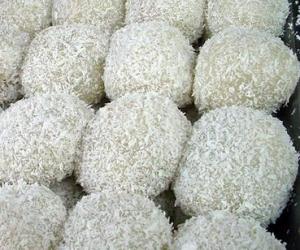
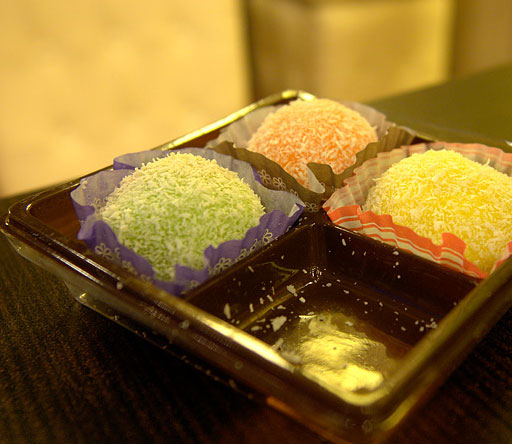
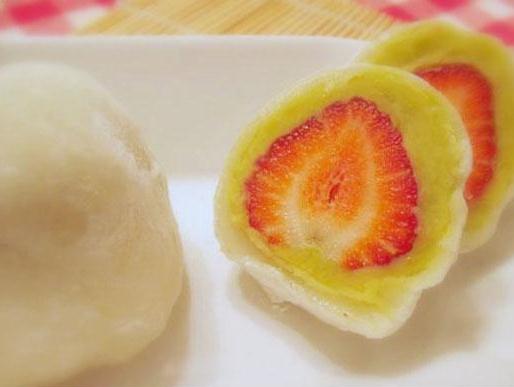
It is one of the most standard pastries in Hong Kong
The glutinous rice ball is dusted with dried coconut on the outside. The outer layer is made of a rice flour dough and the inside is typically filled with a sweet filling. The most common fillings are: sugar with coconut and crumbled peanuts, red bean paste, and black sesame seed paste.
-
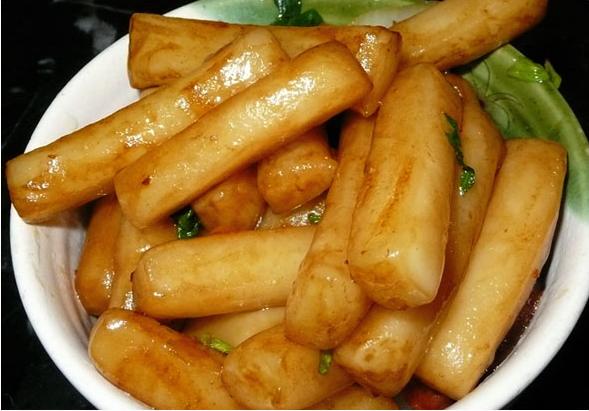
Nian gao is a food prepared from glutinous rice and consumed in Chinese cuisine.
It is available in Asian supermarkets and from health food stores. While it can be eaten all year round, traditionally it is most popular during Chinese New Year.
It is considered good luck to eat nian gao during this time because "nian gao" is a homonym for "every year higher and higher."
-
Okara or soy pulp is a white or yellowish pulp consisting of insoluble parts of the soybean which remain in the filter sack when pureed soybeans are filtered in the production of soy milk. It is part of the traditional cuisines of Japan, Korea, and China, and since the 20th century has also been used in the vegetarian cuisines of Western nations.
Okara is low in fat, high in fiber, and also contains protein, calcium, iron, and riboflavin. It contains 76 to 80% moisture, 20 to 24% solids and 3.5 to 4.0% protein. On a dry weight basis okara contains 24% protein, 8 to 15% fats,and 12 to 14.5% crude fiber. It contains 17% of the protein from the original soybeans.
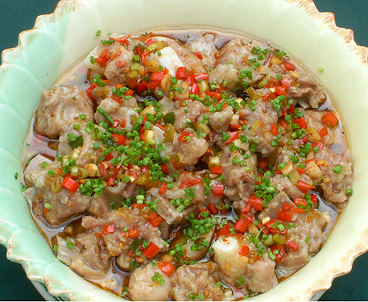
-
Oyster omelette pictures:

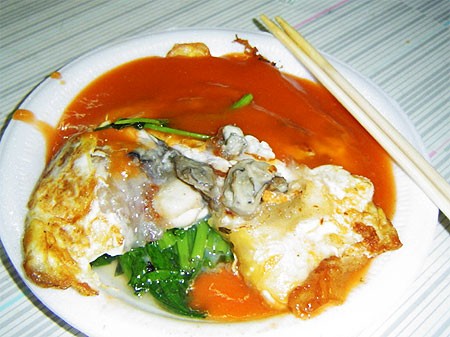
-
paomo pictures:
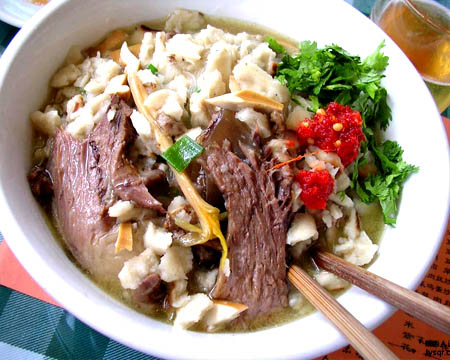
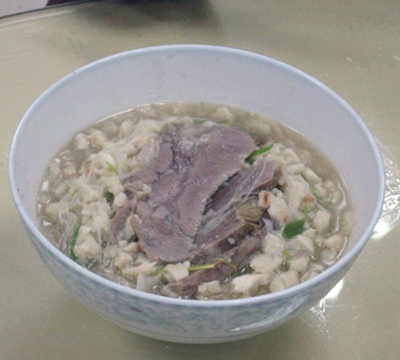
-
Qingtuan (Chinese: 青团, literally "green cake") is a traditional Chinese dish.
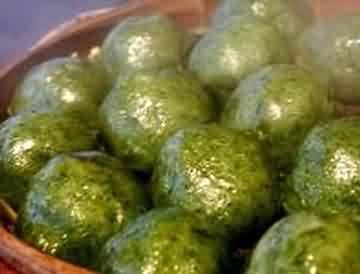
This food, which looks like a round green stone, is made of rice, black bean paste and a special plant called maiqing (麦青) (barnyard grass shoots).
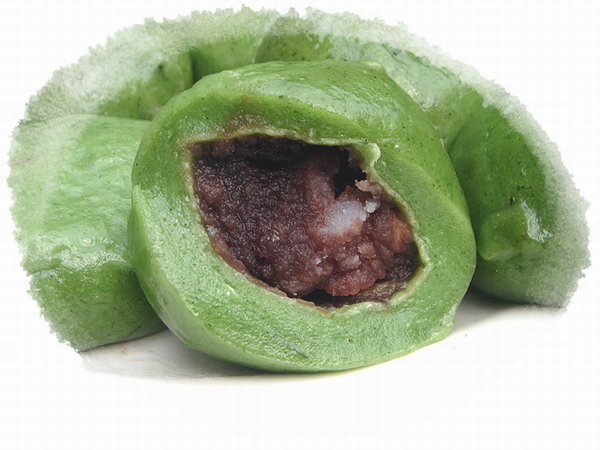
The exact technique in making qingtuan is quite complicated.
Barnyard grass shoots are edible only in spring, so this food is eaten for the annual Qingming Festival, which falls around April 5 in the Gregorian Calendar.
Looks pretty interesting, what does it taste like and how is it made? The shell looks
spongy. Is is a popular snack in many regions of China? I have been China for a short trip in September and ate moon cakes, which, besides the shape, seem very different from green cake.
spongy,glutinous and sweet, just like cake .
It is only popular in Jiangsu and Zhejiang province of China.
-
Qingtuan (Chinese: 青团, literally "green cake") is a traditional Chinese dish.

This food, which looks like a round green stone, is made of rice, black bean paste and a special plant called maiqing (麦青) (barnyard grass shoots).

The exact technique in making qingtuan is quite complicated.
Barnyard grass shoots are edible only in spring, so this food is eaten for the annual Qingming Festival, which falls around April 5 in the Gregorian Calendar.
-

 Rubing is a firm, fresh goat milk cheese made in the Yunnan Province of China by people of the Bai and Sani (recognized as a branch of the Yi in China) minorities.
Rubing is a firm, fresh goat milk cheese made in the Yunnan Province of China by people of the Bai and Sani (recognized as a branch of the Yi in China) minorities. Its Bai name is youdbap, meaning "goat's milk".
It is made by mixing heated goat's milk and a souring agent, traditionally a mixture called naiteng made from a cultivated vine.
It is often served pan fried, and dipped in salt, sugar . It may also be stir fried with vegetables in place of tofu.
Much like paneer or queso blanco, it is an unaged, acid-set, non-melting farmer cheese, but with the aroma of fresh goat's milk.
Hello-I have heard of a Bai dish called rushan 'yogurt fan' and it has been described as a yogurt waffer and is served with Hui Wei Cha (the last course of a san dao cha). Is your dish similar?
They are both Yunnan specialty, dairy products.
Rushan has less moisture than rubing.
-
I also saw something similar on Anthony Bourdain's show when he went to Tibet.
They also had a cheese (made from Ox's milk) that looked like a block of tofu but you ate it as is with a sugar dip. Wonder if it's the same type of cheese?
I never went to Tibet, so, not sure of that, but Rubing looks like a block of tofu, indeed.
-
lilyhotel--did you make those dishes? What's the one on the bottom? Is it just the cheese that has been shaped, or is there more to it? It's so cute!
Another question--why is it considered a dessert? From your description it seems to be more of a savoury-food component.
I ate it in China. There was suger on it, tastes sweety , so I think it is a dessert.
-
Personally speaking, I think Inner Mongolian cuisine is distinctly Mongolian, although Inner Mongolian is one party of China(PRC).
The most common dish is cooked mutton, often without any other ingredients.. haha....
PS: The Mongolian diet includes a large proportion of animal fat. While this would lead to health problems in an industrialized society
Just wondering...is Inner Mongolian cuisine distinctly Mongolian or is it considered a regional Chinese cuisine?Also, can anybody refer to me any specialties? Hot Pot perhaps?
P.S I'll be posting more often these days since I recently returned home from my holidays yay!
-
It's a Japanese creation, popular in TaiWan, China.
It has the efficacy of anti-asthma.
Simplified Chinese: 豆乳锅
Traditional Chinese: 豆乳鍋 (usually used in Taiwan.)
In Chinese (hopefully I'm copy pasting this right) 豆乳鍋 and in Japanese 豆腐の豆乳鍋.I'm not so sure whether this is a Chinese or Japanese creation although admittedly, my first (and sole) experience had been at a Japanese restaurant. Googling it, I've found many results linking to Taiwan.
Anyway, that aside, who here has tried it? What are your thoughts? Yay or nay?
From what I recall, it was sort of rich, being slightly (just a tad) creamy. In that respect, I felt like I was eating seafood laksa hotpot-style. Very interesting indeed; I'm tempted to try it at home (or maybe even plain milk...or coconut milk?!).
I've heard stories that soymilk hot pot is great in nutritional value but I can't be too sure myself.
Food porn
http://www.flickr.com/photos/osakajon/93089572/
-

 Rubing is a firm, fresh goat milk cheese made in the Yunnan Province of China by people of the Bai and Sani (recognized as a branch of the Yi in China) minorities.
Rubing is a firm, fresh goat milk cheese made in the Yunnan Province of China by people of the Bai and Sani (recognized as a branch of the Yi in China) minorities. Its Bai name is youdbap, meaning "goat's milk".
It is made by mixing heated goat's milk and a souring agent, traditionally a mixture called naiteng made from a cultivated vine.
It is often served pan fried, and dipped in salt, sugar . It may also be stir fried with vegetables in place of tofu.
Much like paneer or queso blanco, it is an unaged, acid-set, non-melting farmer cheese, but with the aroma of fresh goat's milk.
-
less than ten
-
How much is the book ?
ps, what do you mean by roquefort broiche ? I can't find these words in my dict.

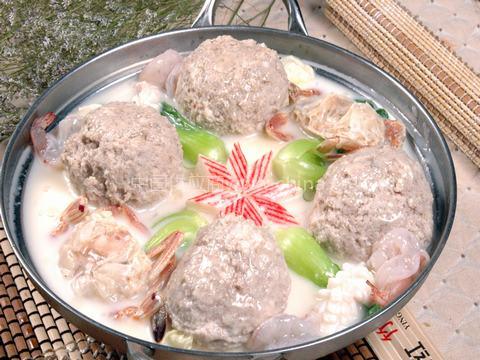
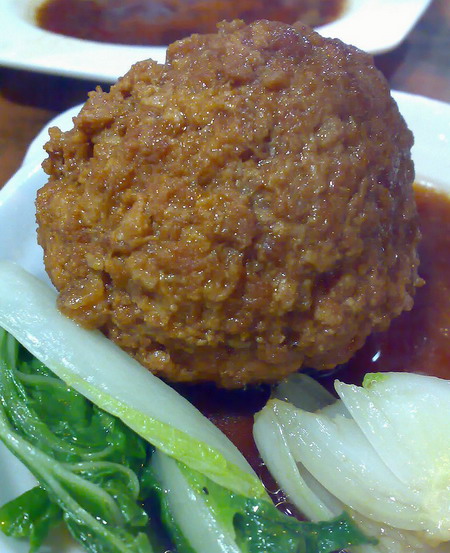
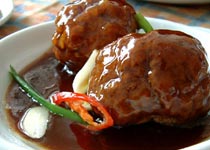
Shang Hai Food Safety?
in China: Dining
Posted
western restaurants in China are always expensive.
You can go to Campus to eat , like Shanghai Jiao Tong University.
, like Shanghai Jiao Tong University.